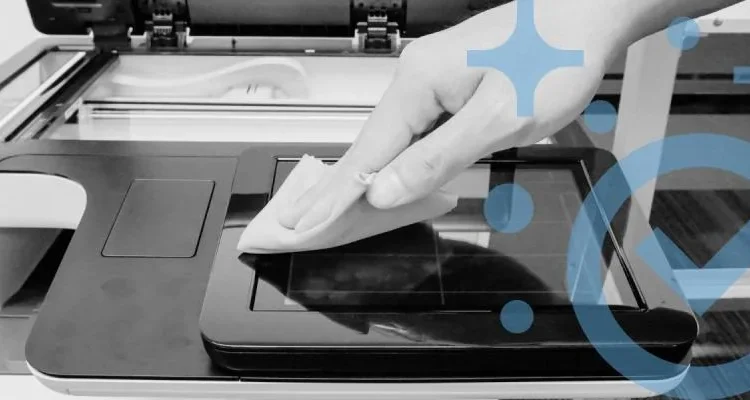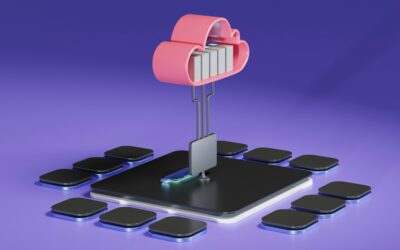Introduction
Printers are magnets for dust, paper debris, and ink residue — especially in Nairobi’s dusty environment. Over time, a dirty printer can cause:
Blurry or smudged prints
Frequent paper jams
Faded ink output
Nozzle clogs
Permanent damage
The good news? You don’t always need a technician. With the right steps and supplies, you can safely clean your printer at home or in your office.
In this guide, TechnoDrives shows you how to clean your printer without voiding the warranty or damaging internal parts.
What You’ll Need
✅ Lint-free cloths or microfiber towels
✅ Cotton swabs or foam swabs
✅ Isopropyl alcohol (90% or higher)
✅ Compressed air can (optional)
✅ Gloves (optional but recommended)
✅ Newspaper or old towel to protect surfaces
💡 Never use water, harsh chemicals, or rough cloths.
1. Turn Off and Unplug the Printer
Safety first!
Shut down the printer using its power button
Wait until all lights go off
Unplug the power cord and any USB cables
Let it sit for 5–10 minutes to cool down
⚠️ Never clean a printer while it’s still plugged in — risk of shock or short circuit.
2. Clean the Exterior
Start with the body:
Use a slightly damp lint-free cloth
Wipe the sides, top, and control panel
For buttons and corners, use a dry cotton swab
If your printer is glossy, use circular motions to avoid streaks
🧴 Avoid spraying anything directly onto the printer!
3. Open the Printer and Remove Cartridges (Gently)
Depending on your printer type:
For inkjets: Lift the lid and let the cartridges move into position
For lasers: Open the toner access panel
Gently remove cartridges and set them on clean paper
🧤 Wear gloves if handling toner to avoid stains.
⚠️ Never touch the print head nozzles or electrical contacts with your fingers.
4. Clean Inside the Printer
For Inkjets:
Use a dry microfiber cloth to wipe around the cartridge area
Use compressed air to remove dust from tight spaces
Clean visible ink buildup with a lightly alcohol-dampened swab
Avoid touching the printhead — unless trained
For Laser Printers:
Remove toner cartridge
Shake gently to redistribute powder (if nearly empty)
Wipe the transfer roller and paper path with a dry cloth
DO NOT touch the drum unit — it’s sensitive to light and oils
💡 If you see built-up toner or paper dust, blow it out gently or wipe with care.
5. Clean the Paper Tray and Feed Rollers
Dust or grime on rollers can cause paper jams.
How to clean:
Pull out the paper tray
Remove any stuck paper or bits
Use a cotton swab with isopropyl alcohol to wipe the rollers
Rotate the rollers manually to reach all sides
Let dry for 5 minutes before reloading paper
📌 If rollers are slippery or cracked, they may need replacement — contact TechnoDrives.
6. Clean the Scanner Glass (if applicable)
Many multi-function printers have scan glass and an ADF (Auto Document Feeder).
Clean with:
Glass cleaner or 90% isopropyl alcohol
A lint-free cloth (no tissue or paper towel!)
Wipe gently in circles to remove smudges and lines
📷 Dirty scan glass leads to streaky or shadowy copies.
7. Reinstall Cartridges and Test
Once everything is clean:
Reinsert cartridges carefully
Close all panels
Plug the printer back in
Turn it on and print a test page
Check:
✅ Print quality
✅ Roller movement
✅ Noise levels
✅ Paper feed
🧠 If anything seems off, stop and contact a technician.
Bonus: Clean Print Heads via Software
Most inkjets allow you to clean the printhead using built-in software.
For example:
On HP Smart: Tools > Clean Printhead
On Epson: Maintenance > Head Cleaning
On Canon: Utilities > Deep Cleaning
🖨️ Run this if prints are faded, missing lines, or uneven.
When to Call a Technician
Call for professional cleaning if:
Ink is leaking inside
Paper keeps jamming despite cleaning
You notice black streaks or toner buildup
You’re unsure about drum/printhead handling
👨🔧 TechnoDrives offers deep cleaning, servicing, and part replacement across Nairobi.
How Often Should You Clean Your Printer?
Light use (home users): Every 2 months
Moderate use (office): Monthly
Heavy use (cyber cafés, schools): Every 2–3 weeks
💡 Nairobi’s dust makes regular cleaning more important than in cooler or cleaner regions.
Conclusion
A clean printer is a healthy printer — it runs faster, lasts longer, and delivers better prints. Whether you’re printing school reports, ID copies, or receipts, regular cleaning keeps your workflow smooth and frustration-free.
With a few tools and simple steps, you can clean your printer at home. And if you’re ever unsure, the TechnoDrives team is just a call away.



